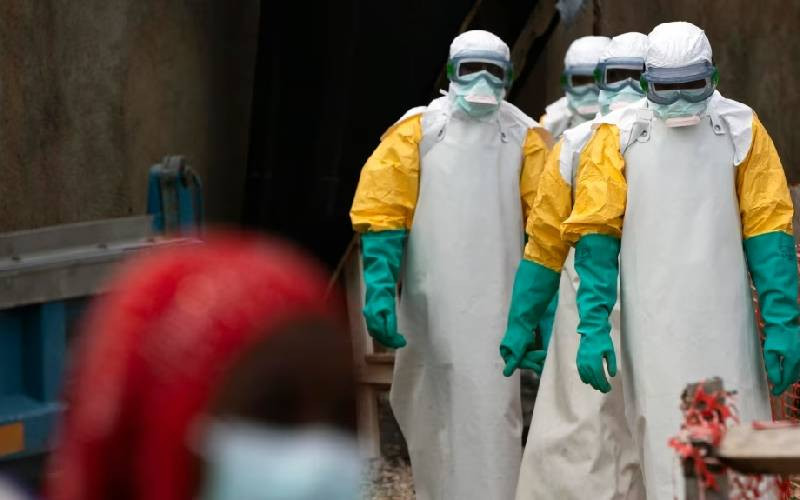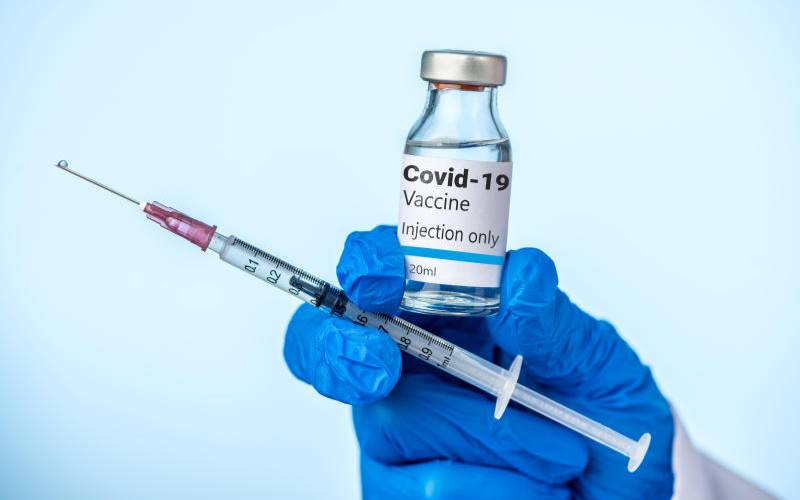NAIROBI: It is an extraordinary thing to eradicate a disease from the face of the earth; as great a human accomplishment as inventing the internet or putting man on the moon.
Two serious ones have already been wiped out, and we would like to seize the momentum and launch a major effort to eradicate a third.
The two diseases that are gone are smallpox, a scourge of human history, and rinderpest, a chronic killer of cattle and instigator of famine.
The disease we propose to be the third target for elimination is often deadly to sheep and goats, but also devastating to the livelihoods of hundreds of millions of smallholder farmers who rely on these animals for meat, milk and other products for income generation.
Called by its French name peste des petits ruminants (PPR), which means small ruminant plague, the disease can wipe out entire unvaccinated flocks in a matter of days.
PPR is an ideal candidate for total eradication as there is only one virus strain for which an effective vaccine exists.
That is why the organisations we lead are jointly launching and leading a 15-year campaign to eradicate the disease, involving regions and countries.
By 2030 the world should be free of PPR.
Why target PPR?
Since it was first identified in 1942 in Cote d'Ivoire, the disease has spread throughout Africa, Middle East, Central and South Asia and most recently, has swept across China. As a result, today PPR is present in more than 70 countries.
If no action is taken now, the disease is expected to spread further into southern Africa, Southeast Asia and Mongolia. Most countries in the Mediterranean basin are also at risk.
PPR does not affect human health directly, but it seriously jeopardises the livelihoods of millions of poor smallholders.
When their flocks die, farmers and their families in rural areas are pushed deeper into poverty, increasing their levels of malnutrition and often losing this unique asset.
Eradicating the rinderpest plague in cattle – led by FAO and OIE and achieved in 2011 – showed that with political will, economic commitment and the full involvement of veterinary services including practitioners, local shepherds, pastoralists, and farmers, countries can eradicate a disease completely that was not only devastating but entrenched across more than 120 of countries in Africa, Asia and Europe.
We have to take advantage of the momentum built thanks to this recent success against rinderpest and follow this model to eradicate another disease.
Stay informed. Subscribe to our newsletter
One key component of the strategy is the strengthening of veterinary systems.
Stronger veterinary services – private and public – contribute directly to human health and food safety, the protection of such threats from animals such as rabies, brucellosis, Ebola, or antimicrobial resistant organisms that may have environmental or animal origin.
Consumer confidence relies on the veterinary systems of regulatory inspection and assurances of compliance.
There are around 500 million family farmers in developing countries and a high percentage of them depends on small ruminants for food such as meat, milk and other products for income generation.
Eradication makes economic sense as it will permanently eliminate the negative socio-economic impacts of the disease and result in estimated savings of almost two billion dollars a year.
This means that the entire investment in this initiative is expected to be recovered within a few years following PPR eradication.
Sheep and goats are extraordinary creatures. They are famously hardy and can survive dry and rocky environments in which cattle or other livestock would perish. They are less expensive than cattle and have a higher reproduction rate.
Men more typically keep and tend cattle, while women earn money from sheep and goats, selling the milk, meat, wool and skins. Women and children make up the majority of those caring for and raising small ruminants.
Many people would benefit by the end of PPR: farmers and pastoralists, traders, retailers, transporter and those who slaughter animals, dress carcasses and cure skins, retailers.
Consumers would benefit, too, both in terms of access to food and nutritional benefits.
 The Standard Group Plc is a
multi-media organization with investments in media platforms spanning newspaper
print operations, television, radio broadcasting, digital and online services. The
Standard Group is recognized as a leading multi-media house in Kenya with a key
influence in matters of national and international interest.
The Standard Group Plc is a
multi-media organization with investments in media platforms spanning newspaper
print operations, television, radio broadcasting, digital and online services. The
Standard Group is recognized as a leading multi-media house in Kenya with a key
influence in matters of national and international interest.
 The Standard Group Plc is a
multi-media organization with investments in media platforms spanning newspaper
print operations, television, radio broadcasting, digital and online services. The
Standard Group is recognized as a leading multi-media house in Kenya with a key
influence in matters of national and international interest.
The Standard Group Plc is a
multi-media organization with investments in media platforms spanning newspaper
print operations, television, radio broadcasting, digital and online services. The
Standard Group is recognized as a leading multi-media house in Kenya with a key
influence in matters of national and international interest.








